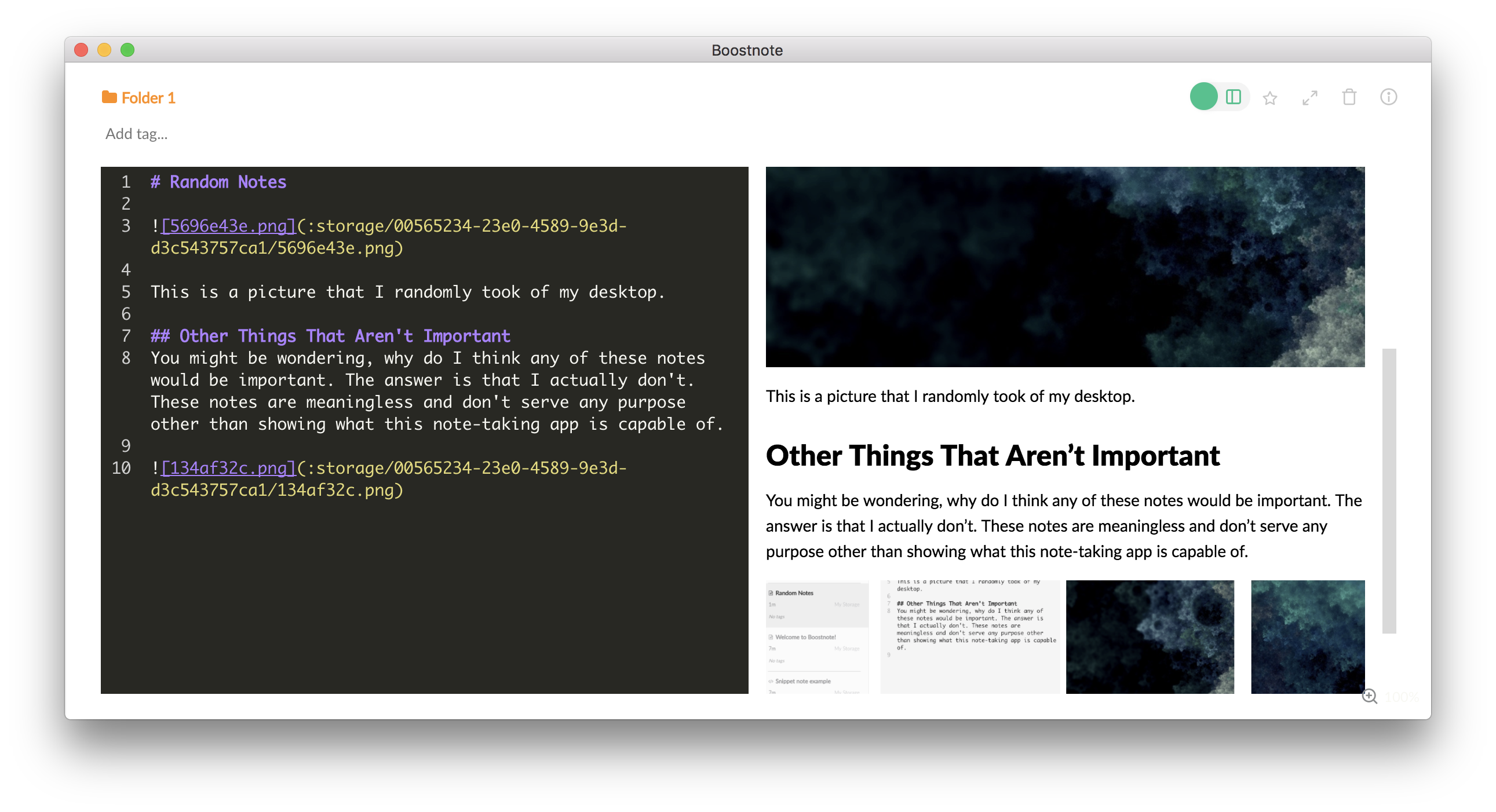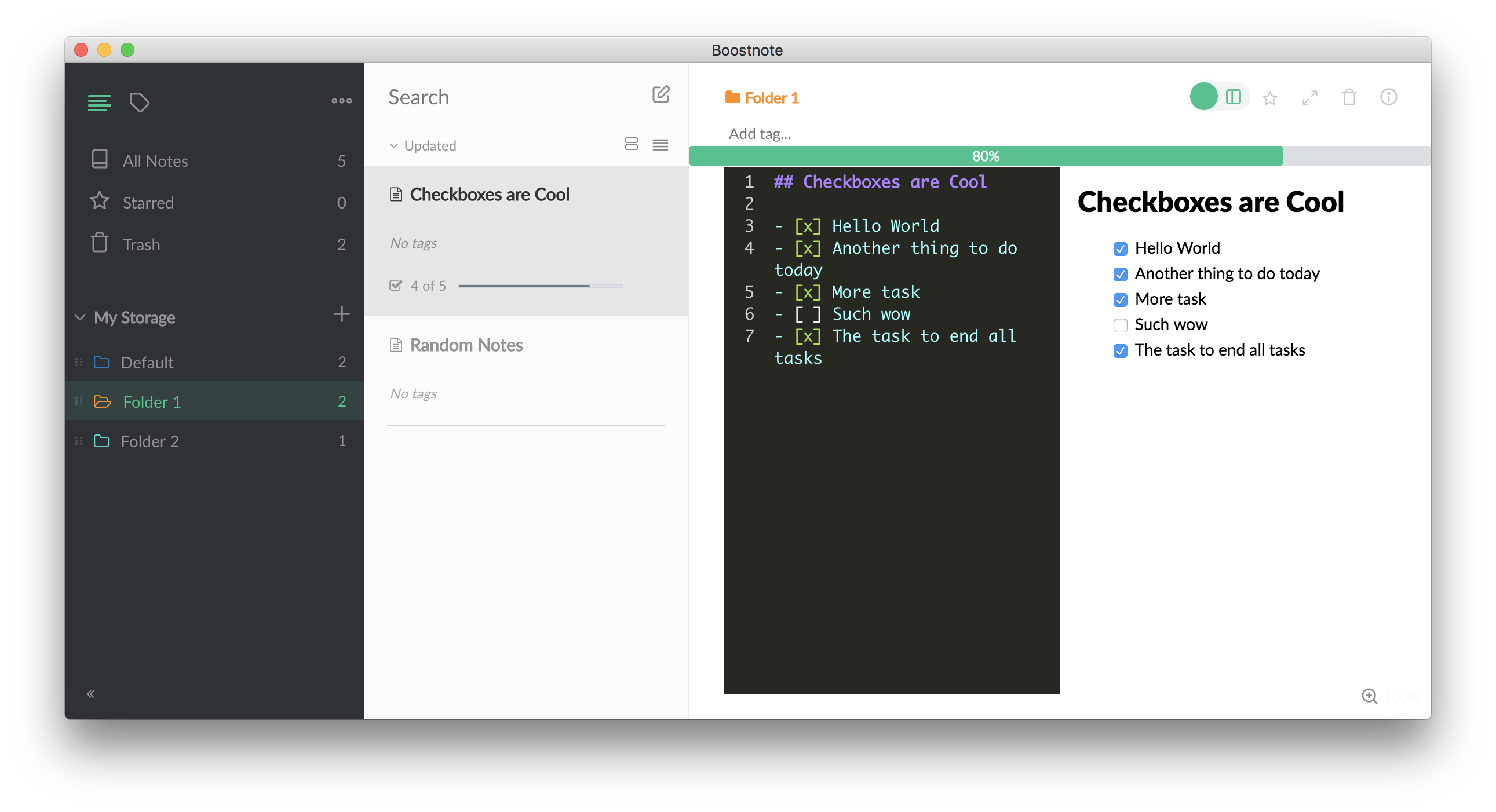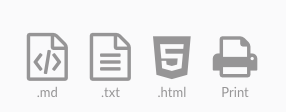Article summary
Recently, my schedule has become quite busy, with various responsibilities competing for my time and focus. I find myself trying to hold onto as much context about these responsibilities as I can, but I can’t seem to remember all of the necessary information. After some careful reflection, I’ve found that I need to take more notes in both my personal and professional life.
How does taking notes help? Switching from one focal point to another can be hard, especially if you don’t have anything to reference. For me, keeping notes and to-do lists has been a great way to off-load some of the context that I’ve been trying to hold in my head all at once.
In a previous post, I talked about how I’d been using the Markdown file format as a quick, efficient way to take notes. However, after reading my post again, I noticed a few things that I’d change now that I have more experience using apps to take notes. Here’s how I’ve refined my thinking.
What Makes a Good Note-Taking App
In my experience, a great note-taking app has to meet these three criteria:
- It has to have a fast and efficient editing experience.
- It needs organization and search capabilities.
- It should be adaptable to change.
1. Fast and efficient editing
A note-taking application should make it easy to manipulate text on the screen. As a Vim user, I’ve grown accustomed to Vim keybindings for navigation and editing, and I feel that my productivity is limited when I’m using an application that doesn’t support macros or offer a command mode.
I’m not saying that a great note-taking app has to have Vim keybindings. But it should have other text-editing features that modern text editors provide: syntax highlighting, auto-formatting, live-preview mode, etc.
2. Organization and search capabilities
Creating/editing notes is a good first step, but a great note-taking app also needs to provide a way to find the notes you’ve already written. Most modern note-taking applications utilize folders and tags to help organize your notes, but these features don’t come standard with most text editors unless you define your own format for adding tags and structure your filesystem accordingly.
You can also search on the command line with tools such as grep, The Silver Searcher, or ripgrep, but not everyone is comfortable on the command line. It’s also nice to know that all of your notes live in one place instead of being tucked into random files spread throughout your hard drive.
3. Adaptable to change
Unfortunately, we don’t always write notes for ourselves. We sometimes have to share notes with others, and it’s no surprise that there are people who don’t like the Markdown format. Sometimes, the people who could benefit from notes you took prefer Word documents or PDFs. They’ll most likely ignore any Markdown files you send them, but they will be much more likely to read your notes if you send them as PDFs.
Since Markdown is such a well-established format, it should be easy to convert your notes to a variety of file formats for easier consumption. Any great note-taking app should allow you to do this. Once again, you could also use a tool like pandoc to convert your notes to multiple file formats, but a note-taking app should provide this functionality by default.
Why Boostnote Is a Great Note-taking Application
Having thought about what I wanted in a note-taking app, I looked around to see what was available. I thought about how I had used VS Code and Bear in the past, but neither of them fully satisfied my criteria. I needed a tool that had the organization and search features of Bear combined with the great editing experience of VS Code. That’s when I came across Boostnote.

Does it have a fast and efficient editing experience?
When I first heard about Boostnote, I thought its claim to be “The intuitive and stylish note taking tool for developers” was rather bold. If it’s “for developers,” it had better have Vim or Emacs keybindings, or else there will be some disappointed developers. It turns out that Boostnote does support both, and these keybindings are available from the settings menu.
You can also adjust the editor syntax theme with a large set of built-in themes, update the font size, and update the number of spaces to indent (or use tabs if you’re into that sort of thing). It also has support for saving snippets of code—similar to a gist.
Boostnote provides a live-preview option like VS Code and Bear, and it also offers support for auto-formatting Markdown tables and embedding images with drag/drop actions.
It’s also possible to embed video links in your notes using an iframe like so:
# Note Title
Here's the video that I'm taking notes on for future reference:
<iframe width="560" height="315" src="https://www.youtube.com/embed/L0qNPLsvmyM" frameborder="0" allowfullscreen></iframe>
- It covers how to use Boostnote
- It's included when you install Boostnote
- Other things that are important to take notes on
Does it have organization and search capabilities?
Boostnote provides folders and tagging for better organization of your notes. It also supports check-boxes and includes a progress bar to track completion of all your tasks for a given note. You can search within specific folders or through all of your notes, and if you remember that you added a sentence to a note at some point but don’t remember which note it was in, you can simply search for some of the keywords from that sentence to find it quickly.
Is it adaptable to change?

One of the things that I liked most about Bear was that it had the ability to export notes as PDF files (not available in the free version). After taking notes during long meetings, I would convert my notes to a PDF and share them with my team. This was a super-valuable feature, and I love that Boostnote has support for this, as well. Currently, they only support PDF export using the “Print to PDF” option, but there are feature requests to make it an available option for export.
Boostnote has satisfied all of my requirements, and I’m really enjoying it. As I use it more often (and take more notes in general), I’ll most likely update my criteria for determining a great note-taking app. In the meantime, Boostnote has earned its spot in my toolbox.
If you want to try Boostnote for yourself, you can download it for free for OSX, Windows, and Linux.
What are some of your criteria for a great note-taking app? Let me know!


I discovered Boostnote and at first I was feeling “where have you been all of my life?” as I was amazed at how it handles markdown so beautifully, especially with the “preview” pane alongside, so writing quick step guides that involve backticked commands is a snap. I am still getting used to its many idiosyncrasies however, and I am having trouble determining if some behavior is by design or just a bug. For instance, sometimes when trying to edit markdown text I am unable to effect any changes at all. I can move the cursor around but typing doesn’t write to the file. Furthermore, I often find myself making a change that I didn’t mean to do only to find the Ctrl-Z doesn’t undo the change! Then, after fumbling about I make some change to the view or something else and I can edit again. I want to think I am just missing a crucial concept, like how vi has visual and insert modes that are radically different from the main mode. Any thoughts?
Hello Matt,
I haven’t run into the exact scenario that you’re describing, but I’ve definitely noticed some weird behavior with Boostnote from time to time. I would recommend searching through their list of issues on GitHub to see if others are experiencing the same issue:
https://github.com/BoostIO/Boostnote/issues?utf8=✓&q=is%3Aissue+is%3Aopen+
Hopefully that points you in the right direction!
Sorry to be so long on responding. It was indeed a known issues and since then it’s been fixed.
Also, the Boostnote markdown cheat-sheet (https://github.com/TobseF/boostnote-markdown-cheatsheet) apparently underwent a major rewrite so if you cut and past the raw README.md text it will render beautifully in Boostnote so that you have a clear 1-to-1 guide with accurate markdown tags. For me it was the missing piece that has allowed me to write all of my documentation using Boostnote as it basically has all of the power of LaTec and then some.
I actually stumbled back onto your blog when I was looking to figure out how to export my Bear notes to Boostnote in bulk since that tool is an unmitigated disaster and saw that you had replied from my post form nearly a year ago. Thanks for that and I will keep your blog in my bookmarks.
The only missing piece (and why I even bother with other markdown editors) is the missing mobile app component. I have just come to accept that none of the other markdown tools are worth downloading let alone paying for and that I ought to just wait for the Mobile Boostnote client project to be resumed (which apparently is happening!)
Once you use Boostnote, everything else really is just some level of inadequate in comparison!
Thanks again!
Hi Alex,
I responded but I don’t see it awaiting moderation. They did in fact fix this known issue since then.
Also, the cheat sheet has been revamped so that you can copy the raw README.md (https://raw.githubusercontent.com/TobseF/boostnote-markdown-cheatsheet/master/BOOSTNOTE_MARKDOWN_CHEAT_SHEET.md) and drop it into Boostnote so all of the formatting works 100%. This was a huge deal for me as I needed a simple one page inventory of all of the tags with the results.
I actually found this page again when looking for a way to mass import all of my Bear notes to Boostnote since it is an unmitigated disaster. P-U!
Thanks again,
Matt
Does it have an Android app? Not right now. End of story for me.
https://github.com/BoostIO/boostnote-mobile/issues/201
As of November 2019 the mobile application development has official resumed. See https://github.com/BoostIO/boostnote-mobile/issues/201#issuecomment-549623413 After trying nearly every markdown editor with an iOS component under the sun and being utterly disappointed in all of them, I am going to wait. I still use Evernote for stuff that I will need to be on mobile but I am counting down the days until I can finally be free of it. If I were you, I would follow this thread and be alerted when it is in the App Store. I assure you that you won’t find a better documentation and note tool out there, at least for the computer.